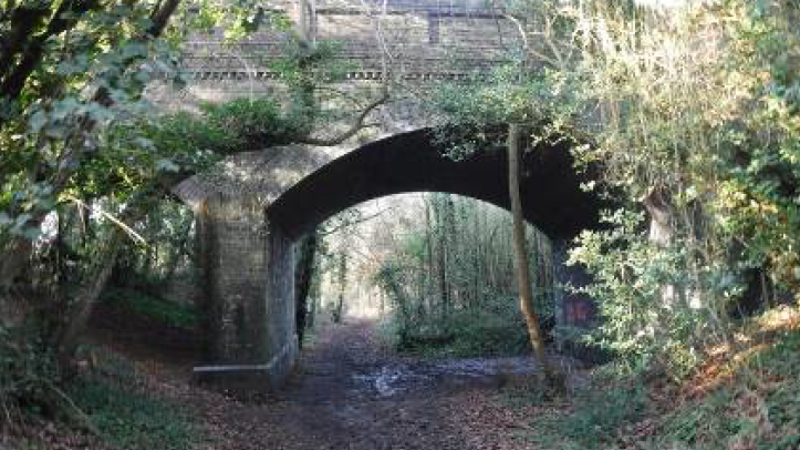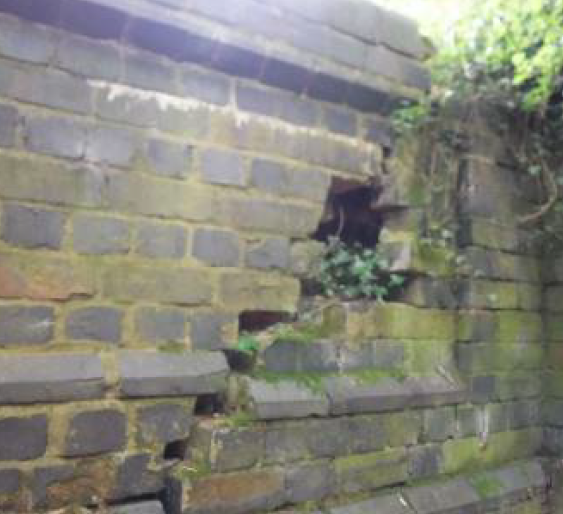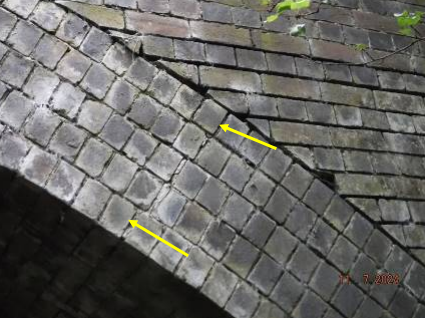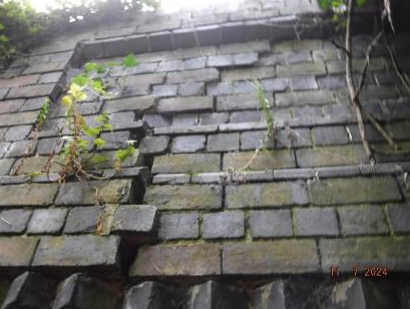Stow Maries Halt
We’re seeking ministerial approval to partially infill this structure to maintain the public right of way while maintaining the public’s safety.

Share this article
Location: Essex, England
Status: Seeking ministerial consent to proceed with planning permission to partially infill
History
The structure was part of the Maldon to South Woodham Ferrers railway line. This line linked Maldon with the newly constructed London to Southend-on-Sea railway. Both opened in 1889.
During the Second World War the service on the line was withdrawn for passenger use. Post-war, the line continued to be used for goods; but, with nationalisation, it closed for good in 1953.
About the structure
Stow Maries Halt is a three-span arch bridge of blue-grey bricks, constructed around 1888. The spandrels include a pattern of alternating courses of red and blue-grey bricks.
The brickwork at parapet level is formed into panels with ‘dogtooth’ decoration below, which are formed from edge-on brickwork. The brick arches are formed from five courses of blue-grey brickwork.
It carries an unclassified road, Church Lane and there is a public right of way under the bridge, which flows through the Essex Wildlife Trust nature reserve. It is accessible all-year-round.
What is the project?
The structure is in poor condition with transverse fractures in the side arch barrels, which extend through the spandrels and into the parapets above.
The abutments, like many three-span structures in Essex, appear to have settled relative to the main structure at least several decades ago, leading to transverse fractures at each end running through the parapets, spandrels, arch rings and soffit. There is a notable drop to the parapet tops.
In January 2025, inspectors noted that the structure had deteriorated further, when one of the end spans suffered further settlement, causing significant additional fractures in the arch structure. An emergency road closure has been put in place by Essex Highways to ensure the continued safety of the public. Drivers are being diverted to an alternative route with no vehicles permitted to pass over the structure until further investigations take place. However, the bridge remains open for pedestrians and dismounted cyclists.



What stage is it at?
The future of the structure was discussed by members of our Stakeholder Advisory Forum in November 2024, looking at options including repairing, replacing, and reducing the span of the bridge. The decision-making process takes into account heritage, social, economic and ecological factors.
Infill of the two outer spans of the bridge has been deemed the most suitable option for this structure. The middle span will remain open to ensure the public right of way can continue to be used.
Following ministerial approval we're seeking planning permission with the relevant local authorities to carry out the work.
We will update this web page when further decisions have been made about the future of the structure, and with regards to the lifting of the emergency road closure.
You can find out more about our approach to infill here.
